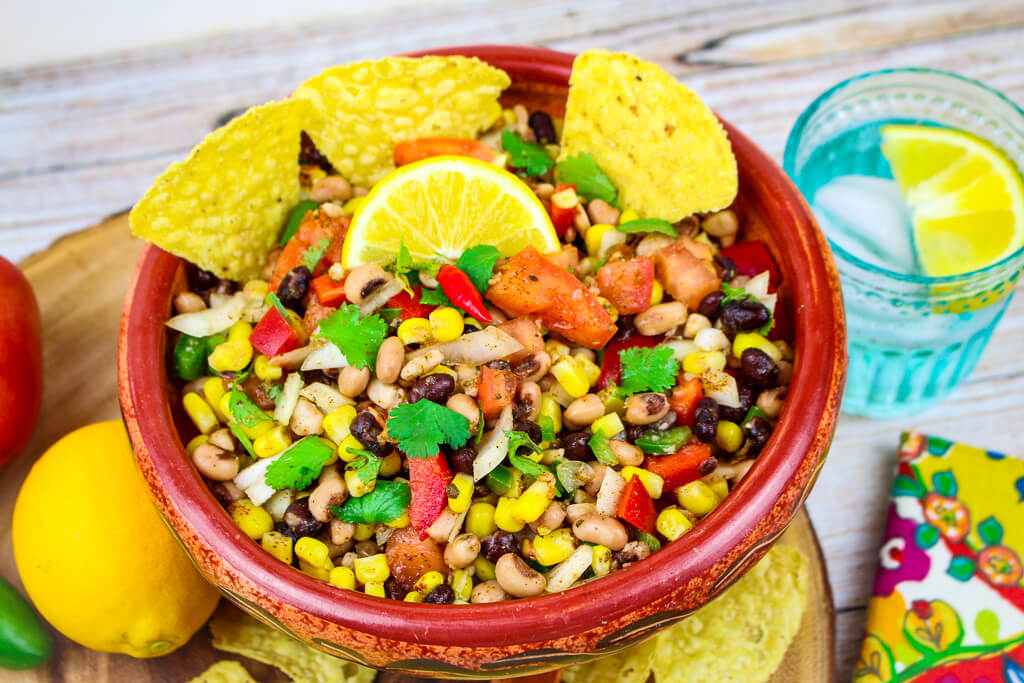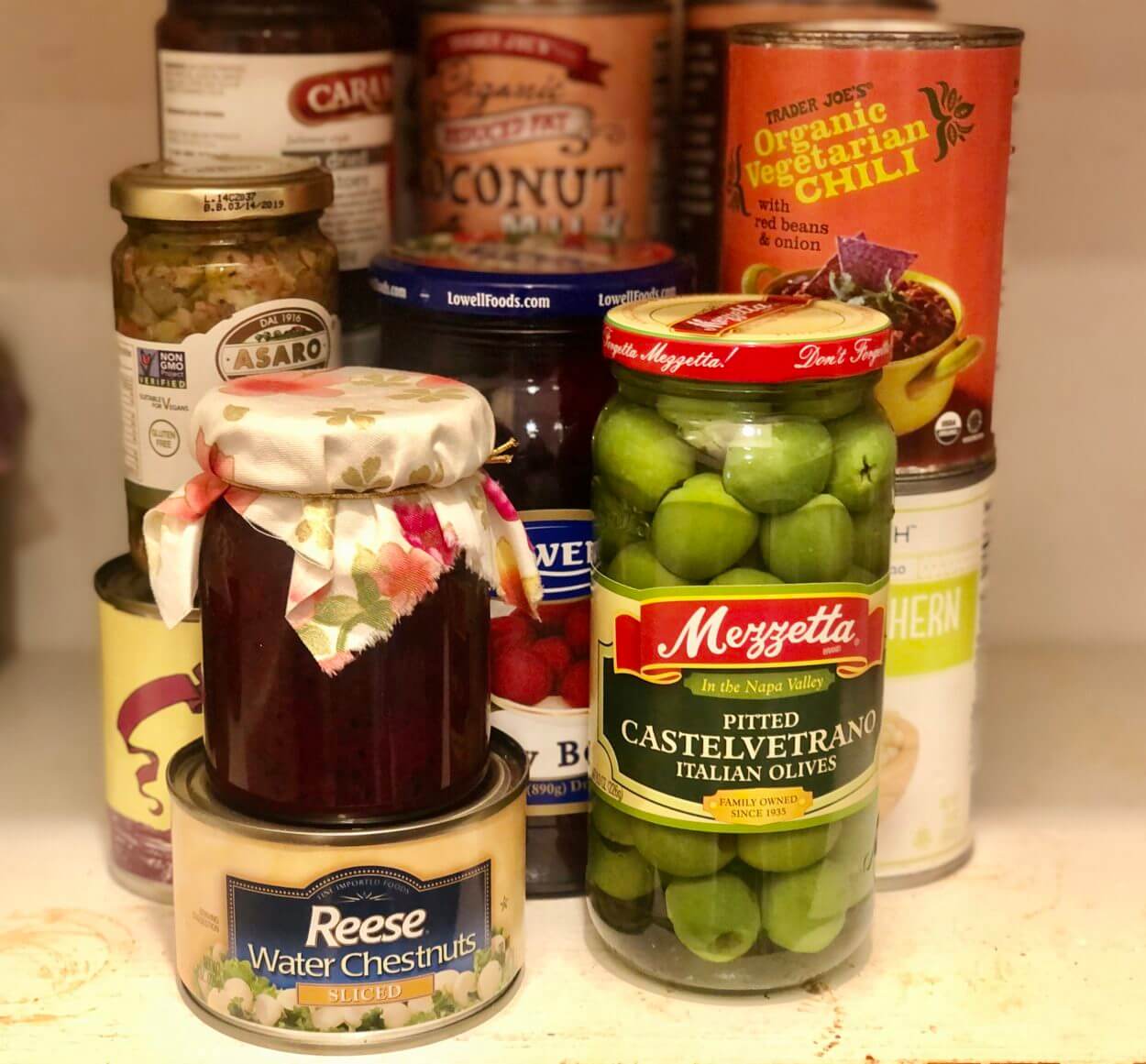13 Nutritionist Tips for Organizing Your Pantry

Cooking meals from scratch can be one of the most impactful things you can do for your health over your lifetime. But so many people report that a shortage of time is the greatest challenge to getting in the kitchen and cooking up healthy, delicious meals. One of the ways you can save time in the kitchen is to get organized! I always say that if you are organized and prepared, you can get a healthy meal on the table in the time it would take you to order and pickup takeout (or do Uber Eats!). Yes, that’s right! One key to getting organized is to make your pantry a lean, mean, fighting machine! It should be organized, well stocked, and filled with all of the things you need to turn out healthful meals, lickety-split. With that in mind, I asked some of the top registered dietitian nutritionists for their best tips on organizing your pantry this year. I’m hoping these fabulous tips guide you to healthful eating all year long!
Eat and Live Well,
Sharon
13 Nutritionist Tips for Organizing Your Pantry
1. Save Money While Organizing. “My absolute favorite way to clean out the pantry is to turn it into a money-saving meal planning opportunity! Take stock of everything available, and make a week or more worth of meals inspired by using up stored goods. This saves money, keeps food from going bad, and inspires creativity in the kitchen,” says Kelsey Lorencz RDN of Simply Nourished Home.

2. Clean and Restock by Category, Oldest Date First. “Take everything out of the cupboards for starters. Clean the shelves before putting stuff back. Put back only the items you use. Organize things in a way that works for you: all canned goods together, nut butters together, cereal, etc. You can even consider doing it alphabetically. Always keep some healthy choices front and center,” says Lisa Young, PhD, RDN.
“Be aware that the dates on packaged foods, not fresh, perishable foods, deal with a food’s quality, and not its safety. When you restock shelves, organize foods in categories. For example, group all canned products in one place and by type. Check the dates on foods and put the oldest in the back,” says Elizabeth Ward, MS, RD of Better is the New Perfect.

3. Do a Mini Pantry Purge. “If you feel overwhelmed by the mess in your pantry, try a mini pantry purge. Just focus on a single shelf and do these simple steps: 1. Take everything out of that shelf. 2. Check the dates and put each item back in an organized way. 3. Get rid of anything that has gone bad. 4. Find a recipe to make that uses up anything that needs to be used soon. Focusing on just one shelf helps avoid the overwhelm of a huge project and should only take a few minutes rather than a whole afternoon,” says Bri Bell, RD of Frugal Minimalist Kitchen.
4. Reduce Plastic. “Focus on getting plastic out of your kitchen and canned goods with BPA to reduce exposure to endocrine disrupters which impact your fertility and future generations. Replace canned goods with glass bottles or tetra boxes,” says Judy Simon MS, RDN, CD, CHES, FAND of Mind-Body-Nutrition.
5. Invest in Organizational Tools. “Dried herb and spice bottles can get pretty unruly. To organize them, buy a three-tiered, expandable, adjustable pantry organizer and arrange your spice and herb bottles in alphabetical order. Getting organized means your spices and herbs will always be at the ready and that you’ll be able to keep track of what you have and won’t buy spices and herbs that you already have,” says Liz Weiss MS, RD of Liz’s Healthy Table.

6. Organize Spices by Use. “I suggest you organize spices by the types of dishes you use them in. For example, Italian, Indian, warm spices like cinnamon, nutmeg, and cloves; and Mexican. Then you can easily pull out a collection of what you need for cooking dishes without spending a lot of time searching,” says Melissa Altman-Traub MS, RD, LDN of Melissa’s Food.

7. Try a “No Buy” Month. “Take stock of what’s already there in your pantry, and start planning meals using canned tomatoes, beans, pasta, rice, and other items. Toss out food that has gone bad, and use up opened boxes of crackers and other snacks,” says Lisa Andrews, MEd, RD, LD of Sound Bites Nutrition.
8. Record the Date. “One thing I have gotten in the habit of doing is writing the purchase date on my dry goods, cans, and spices and freezer items, like frozen fruits and veggies, the day I buy the items before I put them away. That way I know what’s been around for awhile, and it also helps me when I buy other items to go in the pantry or freezer because then I can make sure to put the older items towards the front,” says Mandy Enright, RD.

9. Create a “Need to Eat” Shelf. “We like to implement a ‘need to eat’ shelf at eye level in our pantry and refrigerator. Once a week we move food that needs to be eaten soon to the shelf and try to work items in to our meal rotation, and keeping the goods at eye level means it’s the first thing you see when you open the pantry door. No more out of sight, out of mind lonely forgotten food,” says Kristina Todini, RDN of Fork In The Road.
10. Try Organizing with Bins. “I like to reorganize using basic bins you can find at the dollar store, so you can pull foods out of the pantry easily. Group them by type, most used, or whatever makes sense for your family,” says Niki Morgan, RD of New Frontier Nutrition.
11. Use See-Through Storage Containers. “It’s easier to quickly check availability of ingredients as you’re making your grocery list. Also, you’ll be able to clearly see what’s available for snacking when you wander into the pantry with the munchies. All my crackers and dried fruit and vegetables are transferred from boxes or bags to jars when I get home from the store. Nothing gets lost or forgotten,” says Kristine Duncan, RDN, CDE of Veg Girl RD.
12. Keep Less Healthful Foods in Hard to Reach Places. “A little sneaky tip that I like to use is to put treats and my favorite ‘not so healthy’ snacks out of range where they aren’t easy to reach. Places like way at the bottom of the pantry in the back or way up top! It makes you think twice about grabbing them,” says KeyVion Miller, RD of The Millers Kitchen.
13. Hang a Pantry List. “I like to hang a calendar with a paper pad in the pantry to keep an eye on the menu on my calendar so I can write groceries on as I think of something new or use the last item. This can help when you feel like getting groceries, as the list is right there,” says Denise Coventry, MS RD of Denise Coventry RD.
Look for other tips on healthy living here:
Top 5 Tips for Cooking with Kids
Healthy Plant-Based Cooking in College



